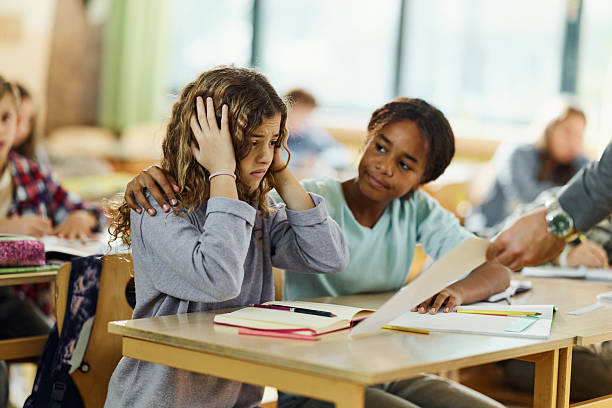In today’s fast-changing world, academic skills alone are no longer enough. Students need emotional resilience, empathy, and interpersonal skills to thrive. That’s where Social-Emotional Learning (SEL) comes in. More than just a classroom trend, SEL is a proven, evidence-based framework that fosters emotional intelligence, better behavior, and improved academic performance.
Whether you’re a teacher, parent, or school leader, understanding the importance of Social-Emotional Learning (SEL) can transform how you support student growth, both in and out of the classroom. In this article, we’ll break down the key benefits of SEL in K–12, strategies for implementation, and how it shapes future-ready learners.
What Is Social-Emotional Learning (SEL)?
Social-Emotional Learning (SEL) is the process of developing self-awareness, managing emotions, building empathy, and forming healthy relationships. It equips students with critical life skills such as:
- Self-regulation
- Goal-setting
- Conflict resolution
- Responsible decision-making
According to CASEL (Collaborative for Academic, Social, and Emotional Learning), SEL supports the whole child by integrating emotional and social development into everyday education.
The Academic Benefits of SEL in K–12
SEL doesn’t just improve behavior, it significantly boosts academic achievement.
Key Stats:
- Students in SEL programs showed an 11% gain in academic performance (CASEL meta-analysis).
- Schools with strong SEL saw higher attendance and graduation rates.
Why SEL Supports Learning:
When students feel safe, respected, and emotionally balanced, their brain’s learning centers are more engaged. This leads to better concentration, memory, and collaboration.
Example:
A 5th-grade classroom that begins each day with a short emotional check-in sees fewer disruptions and increased participation, because students feel heard and supported.
SEL and Emotional Regulation: Building Resilient Students
One of SEL’s core functions is helping students identify and manage their emotions. This is especially crucial in elementary and middle school when emotional development is rapidly evolving.
Techniques to Teach Emotional Regulation:
- Mindfulness practices (deep breathing, journaling)
- “Zones of regulation” posters or charts
- Reflection circles where students discuss feelings safely
SEL in K–12 empowers students to handle stress, frustration, and conflict with maturity, skills that prevent outbursts and bullying.
Enhancing Social Skills and Peer Relationships
SEL encourages empathy, cooperation, and active listening, which are essential for building friendships and working in teams.
Common SEL Practices:
- Group projects with shared responsibilities
- Role-playing scenarios for conflict resolution
- “Kindness challenges” or gratitude journals
Students who engage in SEL are more likely to help peers, resolve disagreements peacefully, and contribute to a positive school climate.
Quote to Remember:
“SEL helps students not only do well but also be well, mentally, socially, and emotionally.”
SEL’s Role in Reducing Behavior Issues and Discipline Referrals
Students with strong SEL skills are less likely to engage in disruptive behavior, aggression, or violence.
Case Study Insight:
A high school in California integrated SEL into its weekly advisory periods. Over one year, suspension rates dropped by 40% and students reported feeling more connected to staff and peers.
SEL Tools That Work:
- Restorative justice circles
- Conflict mediation training
- Peer mentorship programs
SEL and Equity: Supporting Diverse Learners
SEL promotes inclusive environments where every student, regardless of background, feels valued and understood.
Equity-Focused SEL Strategies:
- Culturally responsive lessons that reflect diverse identities
- Safe spaces for student voices
- Bias-awareness training for educators
When implemented equitably, SEL in K–12 can reduce achievement gaps and promote social justice within school systems.
Integrating SEL into Daily School Life
Simple Ways to Incorporate SEL Daily:
| Grade Level | SEL Strategy | Frequency |
|---|---|---|
| K–2 | Morning meetings with emotion charts | Daily |
| 3–5 | Journaling and sharing circles | 3x/week |
| 6–8 | Peer group discussions | Weekly |
| 9–12 | Advisory lessons or check-ins | Weekly/Biweekly |
SEL doesn’t require extra time, it thrives when woven into existing routines like reading discussions, science projects, and even math problem-solving.
The Long-Term Impact of SEL in K–12
Lifelong Benefits Include:
- Stronger college and career readiness
- Higher emotional intelligence (EQ)
- Better relationships and communication skills
- Increased civic engagement
According to a long-term study by the American Journal of Public Health, students with strong SEL skills in kindergarten were more likely to graduate from college and hold full-time jobs by age 25.
Read Also: How to Prevent Bullying in Schools: Proven Strategies That Work
Conclusion
In a world that values both knowledge and character, the importance of Social-Emotional Learning (SEL) in K–12 cannot be overstated. SEL helps children manage emotions, resolve conflicts, and build lasting relationships, skills that shape their success in school, work, and life.
From better academic outcomes to improved classroom behavior and emotional well-being, SEL is the foundation of whole-child education. Whether you’re implementing SEL at the district level or in a single classroom, remember: it’s not an add-on, it’s essential. Invest in your students’ emotional futures today, and you’ll see academic and human growth for years to come.
FAQs
1. What is the goal of Social-Emotional Learning?
The goal of SEL is to help students develop skills like self-awareness, emotional regulation, empathy, and decision-making.
2. Why is SEL important in K–12 education?
SEL improves academic performance, reduces behavior issues, and supports students’ overall emotional health and success.
3. How can teachers integrate SEL into their classrooms?
Teachers can integrate SEL through morning meetings, journaling, group activities, and teaching empathy and cooperation.
4. Does SEL help with mental health?
Yes. SEL supports mental health by providing tools to manage stress, build resilience, and maintain positive relationships.
5. Can SEL be measured?
Yes. SEL progress can be tracked through surveys, teacher observations, and student reflections on emotional and social growth.
